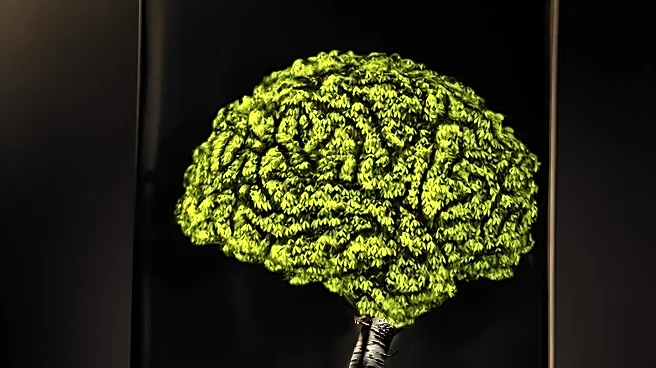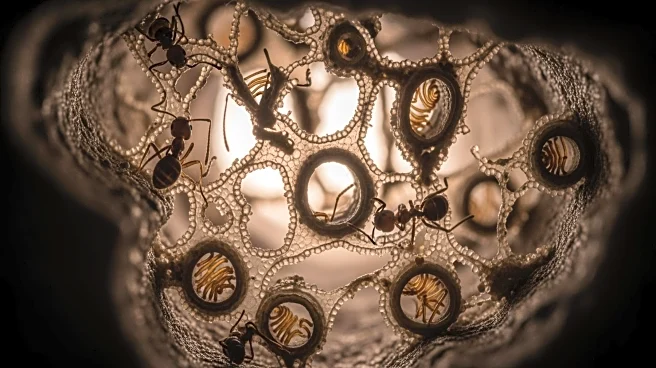What's Happening?
A study published in Science Advances reveals that fossilized human teeth, spanning two million years of evolution, contained high levels of lead. Researchers found that 73% of the specimens tested positive for lead, indicating significant exposure among
ancient hominids and hominins. The study involved creating brain organoids with ancient and modern variants of a gene necessary for brain development. When exposed to lead, organoids with the ancient variant showed dysfunction in a gene involved in speech and language. This suggests that Homo sapiens may have had an evolutionary advantage due to a gene that protected against lead poisoning.
Why It's Important?
The findings highlight the potential role of environmental lead exposure in human evolution, particularly in the development of communication capabilities. Modern humans' advanced communication skills may have provided a survival advantage over other hominid species, such as Neanderthals. This research underscores the impact of environmental factors on evolutionary processes and raises questions about the role of lead in shaping human history. The study also contributes to understanding the long-term effects of lead exposure on brain development and function.
Beyond the Headlines
The study's implications extend to current public health concerns regarding lead exposure. While the research focuses on ancient populations, it highlights the ongoing risks associated with lead in the environment. The controversy surrounding the study's claims, due to the limited fossil record, emphasizes the need for further research to fully understand the historical and contemporary impacts of lead exposure.













